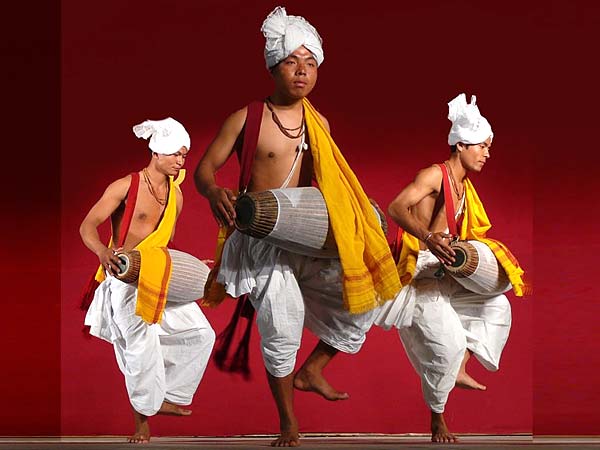India is credited for being the source of various folk dance forms. Read further to know about Indian folk dances.
India is a land of diverse cultures and traditions.
Each region of the country has a unique culture, which is also
prominently visible in its various art forms. Almost all the regions of
the country have their specific folk music and dance, which proves to be
a wonderful way of expression of their community and its traditions.
Though these folk dances are not as complex as the classical dance
forms, they are very beautiful, because of the essence of rawness in
them. Be it the Bihu of Assam, Dol-Cholom of Manipur, Hikal of Himachal
Pradesh or Chhau of Bihar, each of the Indian folk dance forms comes
across as a reflection of the deep sited beliefs and traditions of a
particular culture.
The folk dances of any community are performed on almost every special
occasion and festival, to express elation and joy. These dances are also
considered to be auspicious by many of the tribal communities in the
country. Many folk dances are dedicated to the presiding deity of the
specific community. The most interesting part of a folk dance is the
attire required for its performance. Every folk dance has its own
specific costume and jewelry, which differs from dance to dance. They
are, in general, very bright and colorful, with traditional jewelries
that give a folk touch to the performance. These dances are not only the
exclusive art of a particular community, but also an asset of India's
cultural heritage. In our related section, we have discussed the
different folk dances of India. Read on to know more.
Indian Folk Dances
Central IndiaFolk dance can be defined in the simplest words as a form of dance, developed by a group of people, which reflects the traditional life of the people of a certain country or region. This form of dancing involves a group of happy people, following dance instructions given by an experienced caller.
Eastern IndiaKnown as the mecca of rich heritage and culture, India is one of the very few countries in the world that boasts of varied ethnicity and traditions. An instance of this is the folk dances that have survived past many centuries and continue to withstand, despite the lash of modernization.
North East IndiaIndia has a rich and varied collection of folk dances. In fact, these dances form a very important part of the life of most Indians, in terms of entertainment and celebration, particularly those living in the rural areas. India folk dances are originated from the ordinary people of a society or region and today, serve to reflect the diversity in the country's tradition and culture.
Northern IndiaIndian folk dances are creation of different socio-economic set up and traditions. An integral part of the social environment, they are performed on different occasion, which might be the arrival of a new season, a particular festival, the birth of a child or even a wedding. Indian folk dances are full of energy and vitality and are performed to express joy.
North West IndiaIndia is a land of myriad art forms, one of the most predominant being dance. Whether it is classical or folk, the residents of the country have inclination towards the art form, which is performed in many festivals observed by them. Many people have taken dance as their profession and have been successful in pursuing their career in the art form as well.
Southern IndiaIndia has a rich and varied collection of folk dances. These dances have made great contribution in the development of the classical dance forms of the country. They are less complex in technique, than their classical counterparts, but do follow a broad set of rules, which vary from one dance to another. Folk dances serve as an important part of the life of many Indians, as entertainment options, particularly those who live in the rural areas.
South West IndiaAlmost every festival of India is celebrated with a folk dance, making the dance from an integral part of the country's culture. The diversity in culture and tradition of India is reflected in the folk dances of different states as well. While almost all of them are performed by the rural people, to express their joy on almost every occasion and festival, the elements differ from one region to another.

